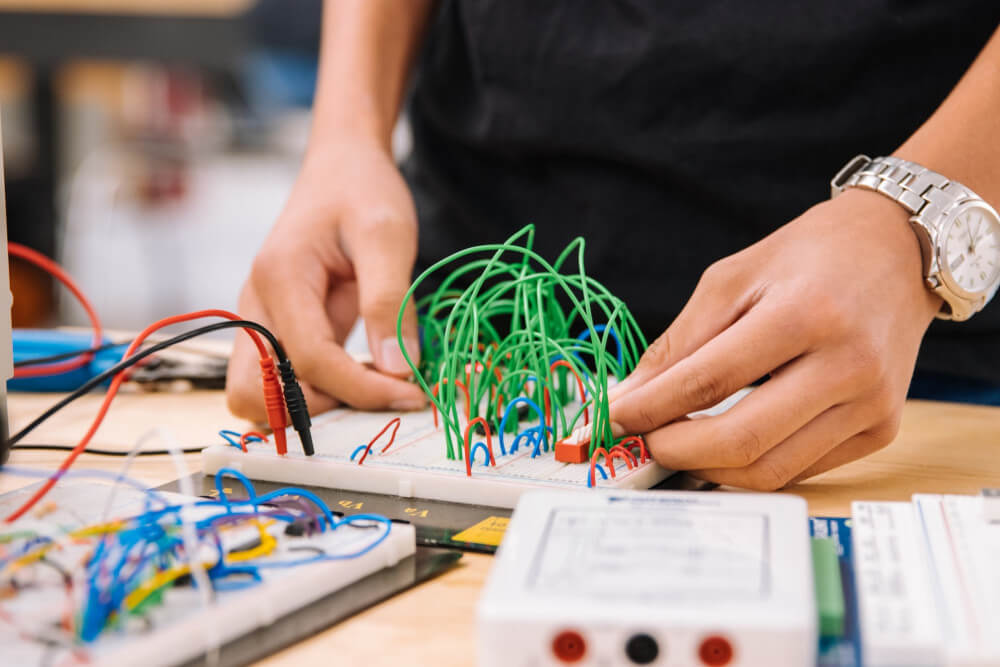What exactly is a cloud? What causes boats to float? What is the operation of a car? You must hear 100 questions like this every day from your preschooler or kindergartner. Young kids have curiosity about everything around them, right from rainbow colors, to bridge engineering.
Despite the fervent interest that many young children have in STEM subjects (science, technology, engineering, and math), that excitement fades as they grow older. But given that STEM careers make up a significant portion of the economy today and most certainly in the future, it’s obviously a good thing to keep stoking that fire. STEM activities should be introduced early on since the capacity to create, be technologically literate, and comprehend how and why things operate together is extremely vital in today’s information age.
However, finding STEM projects for kids is never an easy task, Fortunately, we’ve done the legwork for you. Here are 6 basic STEM activities for kids that you can introduce to your little one even in preschool.
1. Cloud in a Jar
This enjoyable activity focuses on condensation, water cycles, and states of matter. A few common household items (water and hairspray) are used to demonstrate the production of a cloud for children.
This exercise can be built up for older kids into an experiment with two distinct approaches to generate a cloud, as well as a discussion on how water cycles work in the environment. You can take your kids out on a misty or cloudy day and complete this activity to help them connect the dots.
2. Sticky Note Number Match
This activity is to help kids understand the meaning of numeric numbers using a sheet of paper tacked to the wall, some sticky notes, and a marker. Instead of memorizing numbers, this “game” has kids look for sticky note numbers and paste them on the wall over the grouping of dots (or stars, or banana stickers, as you choose) corresponding to a particular number.
This requires minimum setup, just tape and paper is required! If your children are still struggling with the concept, numbers 1-5 can be a good place to start.
3. Pipe Cleaner Counting

With the help of pipe cleaners and beads, you can teach your child to count while simultaneously providing a visual representation of how numbers grow in size. Simply grab small pieces of paper and number each pipe cleaner. Then, have your youngster arrange the pipe cleaners in descending order and begin stringing on the appropriate amount of beads while counting loudly.
4. Jellybean Building
Learn about buildings, with a mound of jellybeans (or giant marshmallows) and toothpicks. Encourage your child to observe which forms hold together well, which shapes stack well, and which shapes are the most attractive to look at by connecting toothpicks with jelly beans.
This project can help children comprehend the thinking, design, and technology that goes into structural engineering. Try challenging them to build a house or a certain structure.
5. Magnetic Slime
Many parents and educators who are looking for a fun tactile exercise turn to homemade “slime” games. This variation adds a touch of science to the mix by using iron oxide powder and magnets. It can be difficult to perfect the slime consistency, but it can be fixed by adding more glue or liquid starch. When the starch is ready, begin manipulating the slime with a powerful neodymium magnet (or more).
This project is a great conversation starter because kids are bound to have many questions about how magnets work—so don’t forget to brush up on the subject before you begin!
6. Coding a LEGO® Maze

Children can learn the fundamentals of coding through this practice. This activity from ResearchParent has different levels of difficulty as per age group.
Your kids have to put themselves in the shoes of the “user” and line up simple instructions to “guide” their LEGO person through the maze using free printable materials such as different mazes and instruction cards. As kids do this game, they learn to estimate the perspective of something else and get a basic knowledge of command codes, sequence, and looping, which will help them with coding principles later on.
Try these exciting activities to form your kid’s foundations in science, technology, engineering, and math. Don’t forget to check out the second part of this series.





